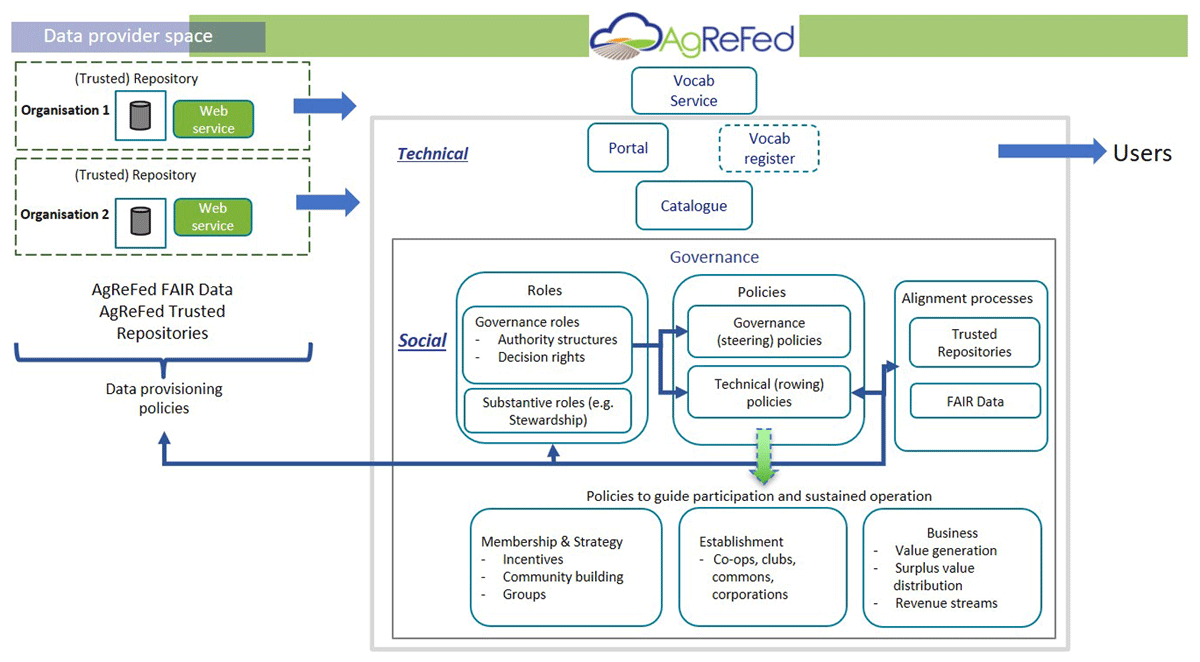Difference between revisions of "Main Page/Featured article of the week/2023"
Shawndouglas (talk | contribs) (Added last week's article of the week) |
Shawndouglas (talk | contribs) (Added last week's article of the week) |
||
| Line 17: | Line 17: | ||
<!-- Below this line begin pasting previous news --> | <!-- Below this line begin pasting previous news --> | ||
<h2 style="font-size:105%; font-weight:bold; text-align:left; color:#000; padding:0.2em 0.4em; width:50%;">Featured article of the week: January 09–15:</h2> | |||
<div style="float: left; margin: 0.5em 0.9em 0.4em 0em;">[[File:Fig1 | <div style="float: left; margin: 0.5em 0.9em 0.4em 0em;">[[File:Fig1 Wong DataSciJourn22 21-1.png|240px]]</div> | ||
'''"[[Journal: | '''"[[Journal:Development and governance of FAIR thresholds for a data federation|Development and governance of FAIR thresholds for a data federation]]"''' | ||
The | The [[Journal:The FAIR Guiding Principles for scientific data management and stewardship|FAIR]] (findable, accessible, interoperable, and re-usable) principles and practice recommendations provide high-level guidance and recommendations that are not research-domain specific in nature. There remains a gap in practice at the data provider and domain scientist level, demonstrating how the FAIR principles can be applied beyond a set of generalist guidelines to meet the needs of a specific domain community. We present our insights developing FAIR thresholds in a domain-specific context for self-governance by a community (in this case, agricultural research). "Minimum thresholds" for FAIR data are required to align expectations for data delivered from providers’ distributed data stores through a community-governed federation (the Agricultural Research Federation, AgReFed) ... ('''[[Journal:Development and governance of FAIR thresholds for a data federation|Full article...]]''')<br /> | ||
|- | |- | ||
|<br / | |<br /><h2 style="font-size:105%; font-weight:bold; text-align:left; color:#000; padding:0.2em 0.4em; width:50%;">Featured article of the week: January 02–08:</h2> | ||
<div style="float: left; margin: 0.5em 0.9em 0.4em 0em;">[[File:Fig3 Giray Sustain21 13-13.png|240px]]</div> | <div style="float: left; margin: 0.5em 0.9em 0.4em 0em;">[[File:Fig3 Giray Sustain21 13-13.png|240px]]</div> | ||
'''"[[Journal:Design of a data management reference architecture for sustainable agriculture|Design of a data management reference architecture for sustainable agriculture]]"''' | '''"[[Journal:Design of a data management reference architecture for sustainable agriculture|Design of a data management reference architecture for sustainable agriculture]]"''' | ||
Revision as of 15:04, 16 January 2023
|
|
If you're looking for other "Article of the Week" archives: 2014 - 2015 - 2016 - 2017 - 2018 - 2019 - 2020 - 2021 - 2022 - 2023 |
Featured article of the week archive - 2023
Welcome to the LIMSwiki 2023 archive for the Featured Article of the Week.
Featured article of the week: January 09–15:"Development and governance of FAIR thresholds for a data federation" The FAIR (findable, accessible, interoperable, and re-usable) principles and practice recommendations provide high-level guidance and recommendations that are not research-domain specific in nature. There remains a gap in practice at the data provider and domain scientist level, demonstrating how the FAIR principles can be applied beyond a set of generalist guidelines to meet the needs of a specific domain community. We present our insights developing FAIR thresholds in a domain-specific context for self-governance by a community (in this case, agricultural research). "Minimum thresholds" for FAIR data are required to align expectations for data delivered from providers’ distributed data stores through a community-governed federation (the Agricultural Research Federation, AgReFed) ... (Full article...)
|











